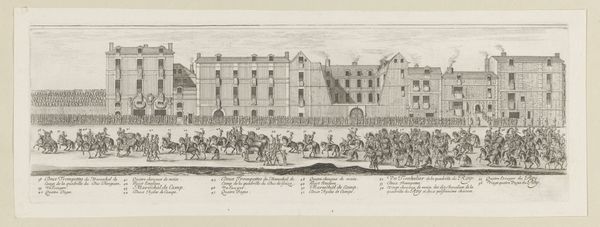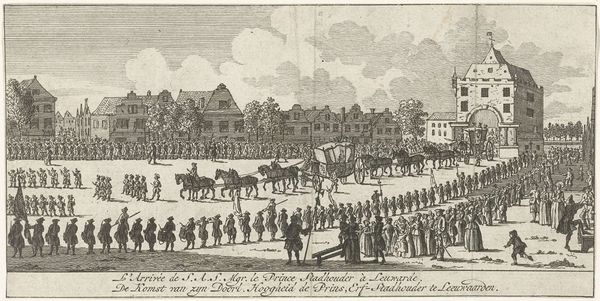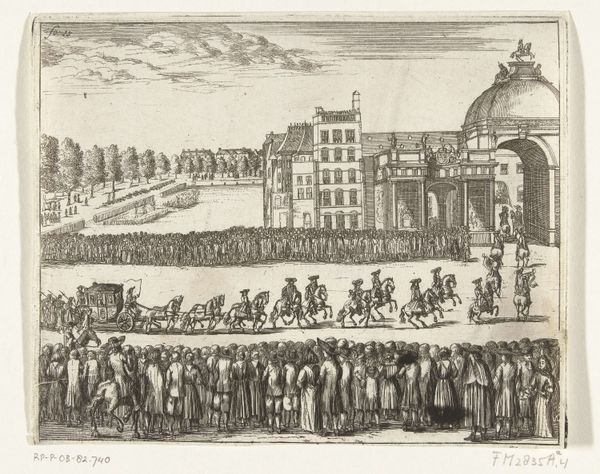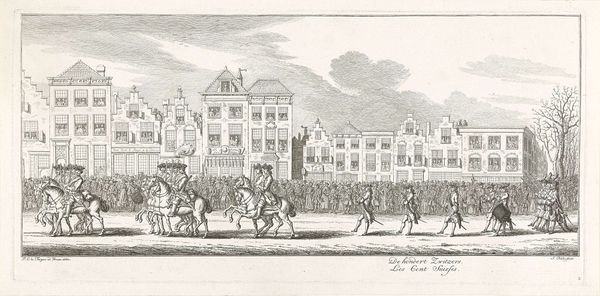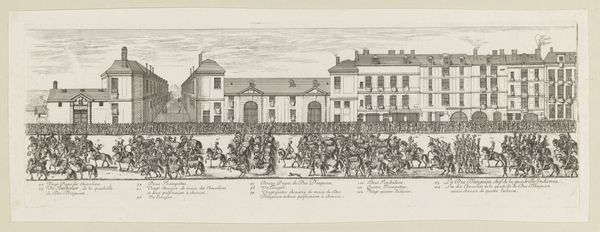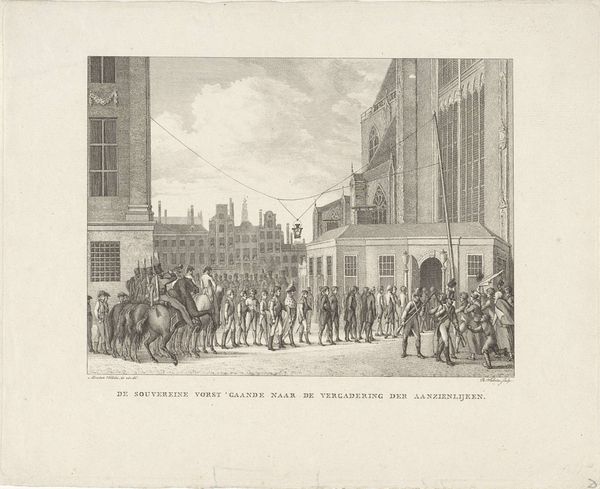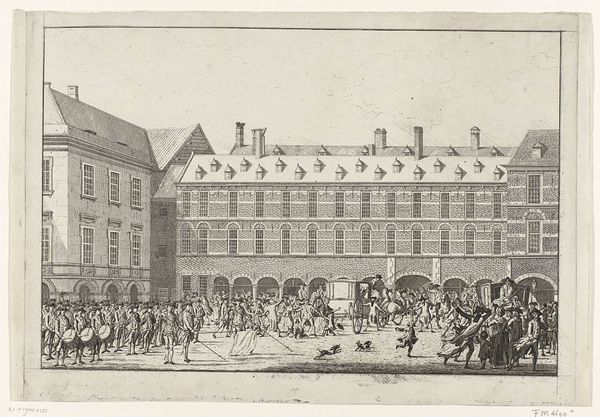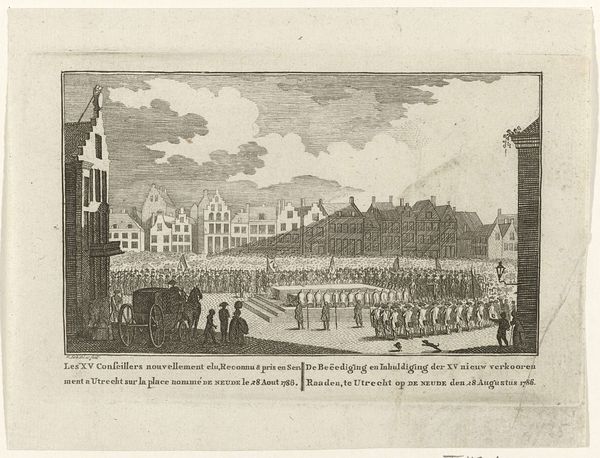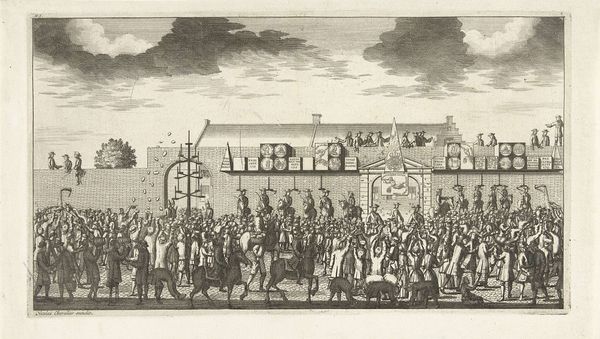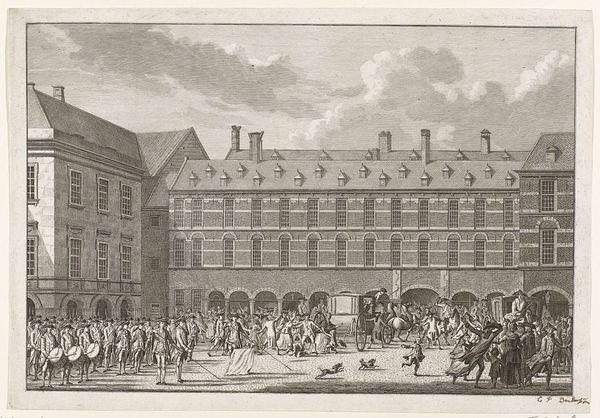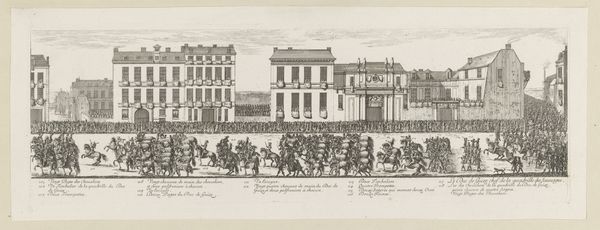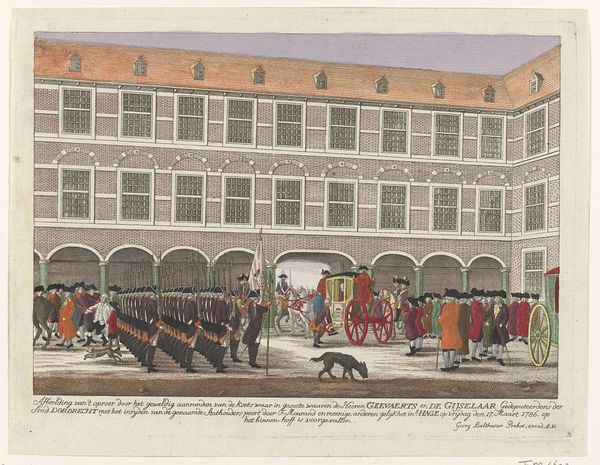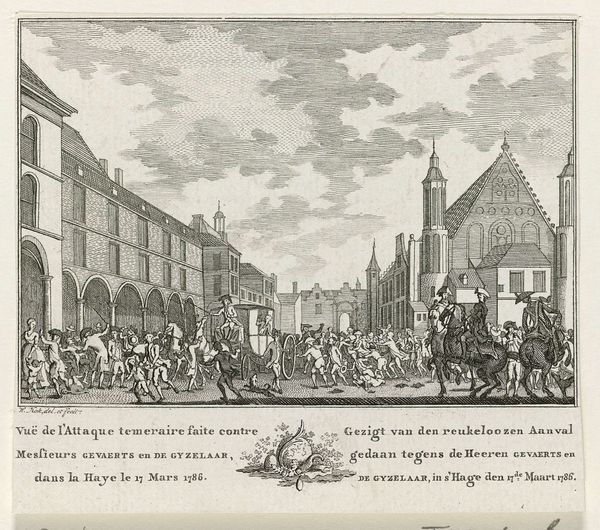
Aanslag op de Gedeputeerden van Dordrecht als zij door de Stadhouderspoort het Binnenhof op rijden, 1786 1786
0:00
0:00
Dimensions: height 242 mm, width 325 mm
Copyright: Rijks Museum: Open Domain
Curator: Look at this captivating 1786 engraving! The Rijksmuseum calls it "Assault on the Delegates of Dordrecht as They Drive through the Stadhouder's Gate into the Binnenhof." It's all lines and light, telling a story. Editor: My first impression? Claustrophobia! So much rigid geometry pressing down—that architecture looming, those tightly ranked soldiers... it feels like a cage. Curator: It is a little intense, isn't it? The way the anonymous artist used line—very crisp and controlled, but perhaps too controlled for my taste? I wonder if it mirrors the societal constraints of the time. Editor: Exactly! These historical prints always whisper so much about power structures. The delegates, representing Dordrecht, are literally driving into the lion's den, right? This Binnenhof. It is The Hague's inner court of power. Curator: Power, yes, but also vulnerability. Note how exposed they are—driving in, so formally processed, like livestock. And the people watching, the soldiers lining up. Such different kind of gazes all centered around this central court, Binnenhof, place of Dutch parliament. Editor: And who are "Geenaerts and Gyselaer"? The title inscription hints at their story and suggests there may be political intrigue—violence even, with talk of an assault. Curator: Political drama aplenty. Remember, 1786 was a period of growing unrest. Think of those rising Patriot factions challenging the authority of the Stadtholder, of the Orangists. The Patriots demanded more say, more democracy. It was an outright war eventually. So you get little assaults, here and there. Editor: I see a building almost under siege—window after window as prison bars. So while formally, the lines denote a neat architectural perspective, emotionally, it evokes a siege. Curator: An assault and a siege at the same time, I guess, given its narrative value, since after all that what happened is the Patriotic leaders Gyselaer and Geeraerts had to seek refuge there. It just proves there's more here than just lines on paper—but it hints at a nation at a real boiling point. Editor: Definitely. It makes me wonder how such images shaped public opinion back then—spreading anxieties, reinforcing divisions… Visual propaganda, perhaps, parading as record-keeping? Curator: Propaganda or record-keeping? It has that "eyewitness account" vibe, right? Regardless, it clearly served to dramatize that volatile moment in Dutch history. So interesting to look at it under these new eyes!
Comments
No comments
Be the first to comment and join the conversation on the ultimate creative platform.
